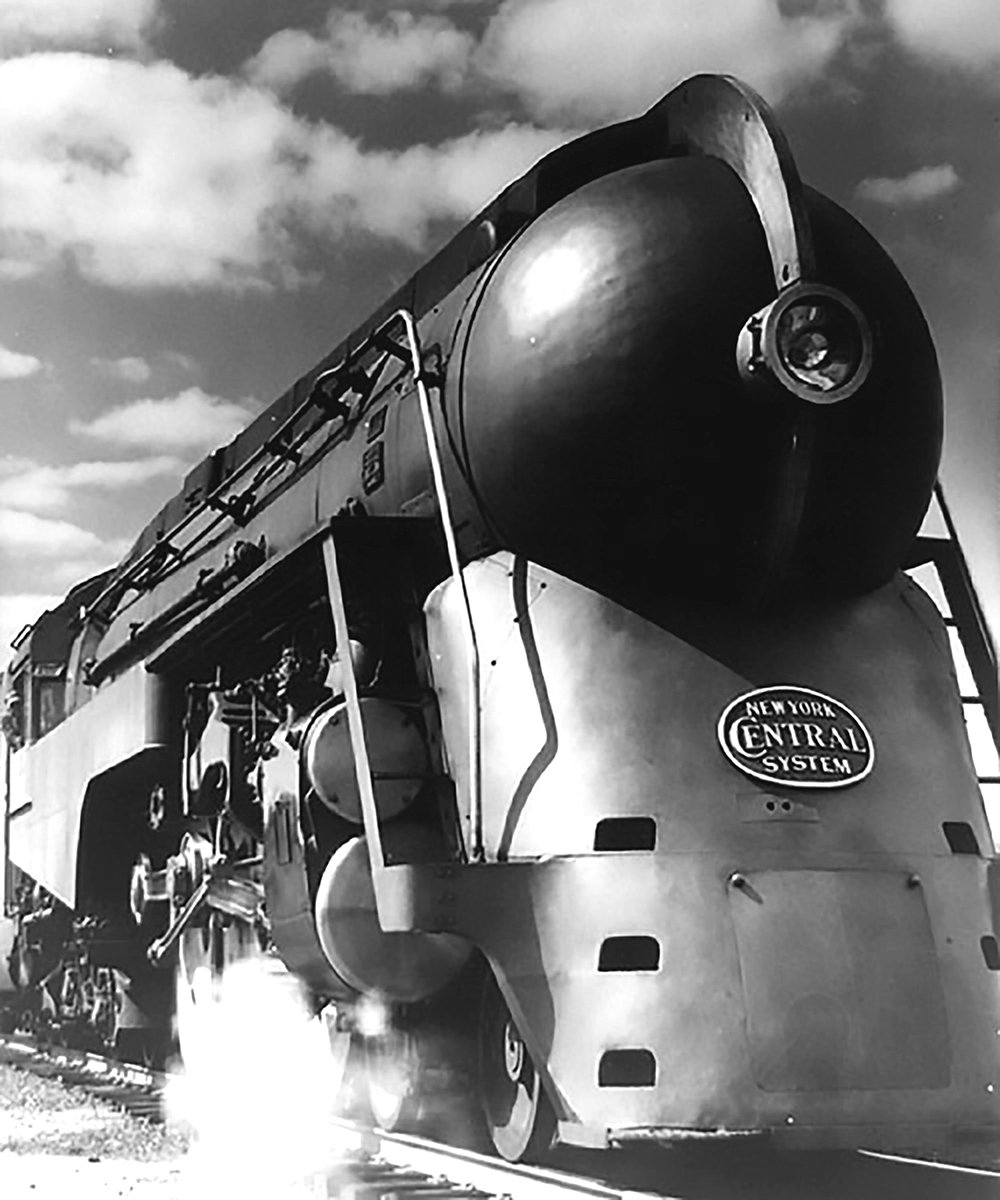
A streamlined bullet engine called The Hudson as it left Grand Central in the 1940’s.
By Mary McTamaney
Seventy-five years ago this week, Newburghers who ventured down to the ferry terminal on Front Street would have found a new schedule being passed around. The New York Central Railroad was adding cars to their routes and issuing warnings that train service could always change on short notice. There were no guarantees the train you wanted to take or the usual services aboard it like a meal car would be available. It was August, 1945 in the midst of World War II. Allied forces had declared Victory in Europe on May 8th of that year but fighting continued for our troops, including many from Newburgh, in the Pacific Theater of Operations. America was still at war with Japan. Hundreds of Newburgh men and women who had been overseas in Europe were uncertain if they would be redeployed to the far east. Their families here shared that anxiety and, by mid-1945, were well into a home front rhythm of sacrifice.
Throughout World War II, the Hudson River waterfront was bustling. Eureka Shipyards was repairing and building craft for the Navy, east end factories were producing materiel for the military and the trains never stopped running night and day. At first, those trains were carrying soldiers to training camps and overseas debarkation ports. Then, they were carrying jeeps and life rafts and uniforms – all the things a fighting force required. Material came from the Hudson Valley corridor and also from the factories out beyond Buffalo into the west. Everything and everyone rode the Hudson Valley rails.
On August 1, 1945, The New York Central published and distributed a new schedule that could continue to carry passengers to their many regular and additional wartime jobs and also begin to carry troops back home. The railroad knew the crush would be huge. My father, for example, finally came home from Europe on a troop transport ship at the very end of 1945 but it took him many days to get passage on the east coast rail lines to get back to his hometown.
That is why the new schedule handed around at the Newburgh ferry terminal in August 1945 included so many departures and so many scheduled stops but also included the warning shown here.
The August 1, 1945 NY Central schedule recently found and shared with me listed forty-one separate departures each 24 hours from Grand Central Station in Manhattan coming north through the Hudson Valley and going all the way to Niagara Falls with connections beyond. The NY Central always traveled the east shore (there was also a West Shore Railroad passenger line in those days) and so there are valley stops listed with ferry service over to the opposite shore. For a comparison with today, 24 of the trains stopped for that ferry service from Beacon to Newburgh. The other startling comparison is that 29 cars are listed as comprising the average passenger train including dining coaches, parlor cars, sleeping coaches and buffet cars. They were configured for long-distance travel but many riders were day travelers with shorter routes. On this west side of the river, connections could be made with West Shore Railroad trains that took passengers to many communities like West Point, Cornwall, Marlboro, Milton and Highland. Thus, rail could often bring people close enough to walk home to their front doors or take a local bus or one of many waiting taxis from the station.
In 1945, the New York Central trains were pulled by very impressive steam locomotives. They would have been a thrill to behold pulling into a station. The most common locomotive was the one that debuted as a modern wonder at the 1939 World’s Fair in New York. It was called The Hudson, named for this river it ran beside. The locomotive model was also nicknamed The Bullet Train for obvious reasons. It was a delight of Art Deco industrial design with what was called a shrouded engine. The end of the age of steam and the arrival of diesel sent these beauties to the scrapyards.
A fascinating 10-minute video made during World War II still exists of the amazing transport of military materiel and personnel by rail. Called “Troop Train,” it shows the movement of one armored division and gives a sense of how those old Pullman cars once carried so many of our military personnel during the 1940’s. Once shown as a short feature in movie theaters, it can now be found online at: youtube.com/watch?v=IIrSwQr4A3c.